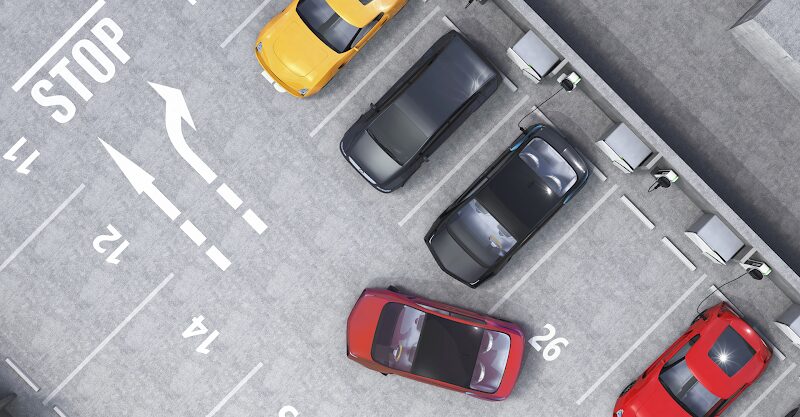Heading to Heathrow Airport? That £5 terminal drop-off charge can feel like an unwelcome surprise. It adds up, especially if you travel often or are just trying to be kind dropping someone off at a Heathrow terminal. Nobody likes unexpected costs, particularly when airport travel already has its share of expenses. You’re probably thinking about how to keep that money in your pocket and avoid the airport drop-off charges. Well, you’re in the right place. There are smart moves you can make, and you’ll learn about Three Ways to Dodge Heathrow’s £5 Drop-Off Fee in 2025 right here.
This fee, sometimes referred to as the Heathrow drop-off charge, was implemented by the airport primarily to manage traffic flow and generate additional income. However, for many individuals, it’s simply another financial burden. Understanding the system and how these charges apply allows you to find effective workarounds. With a little planning, finding Three Ways to Dodge Heathrow’s £5 Drop-Off Fee in 2025 is entirely achievable, meaning drivers pay less. This post is here to help you do just that, making your next trip to this major UK airport a bit lighter on the wallet.
Try alternative transport to Heathrow here.
Understanding the Heathrow Drop-Off Charge
First, let’s examine this charge in more detail. Heathrow Airport introduced it for vehicles dropping off passengers directly at the terminal forecourts, also known as the terminal drop-off zone. This means if you drive right up to the departures area of any Heathrow terminal, the fee applies. The airport uses Automatic Number Plate Recognition (ANPR) cameras to capture the registration number of vehicles entering these chargeable zones. You then typically need to pay this £5 charge online by midnight the day after you enter terminal. Failure to pay Heathrow can result in a much larger Penalty Charge Notice (PCN), so it’s important to be aware of how to pay online or avoid the charge altogether.
The official reasons provided by Heathrow for the drop-off charges often include reducing airport congestion and lowering vehicle emissions in the immediate vicinity of the terminals. Additionally, the revenue generated is cited as contributing to airport improvements and operational costs. While these are valid points from an operational perspective, for many travelers and those providing lifts, it’s an expense they would prefer to avoid, especially for a quick passenger drop-off. This makes knowing how to legally sidestep this fee valuable knowledge for savvy individuals heading to one of the world’s busiest UK airports.
It’s worth noting that the charge was introduced after thorough consideration and consultation, impacting private vehicles, and even some private hire vehicles if not registered for specific business accounts. The system requires drivers to be proactive about payment if they choose to use the terminal drop-off zones. Forgetting to pay can turn a £5 fee into a significantly higher PCN online, adding unnecessary stress and expense to the journey.
Option 1: Use Heathrow’s Free Drop-Off Area at the Long Stay Car Park
This is perhaps the most straightforward and officially sanctioned method to avoid the direct terminal charge. Heathrow offers a free drop-off option at its Long Stay car parks. Each terminal at Heathrow Airport – Terminals 2, 3, 4, and 5 – has a corresponding Long Stay car park where you can drop off passengers without incurring the £5 fee. You can drive into the designated area within the long stay car park, allow passengers to alight, and they can then take a complimentary bus transfer to their respective terminal. This method is completely approved by the airport, so you don’t have to worry about infringing on any regulations when using the stay car park.
How does it work? You simply follow the road signs for the Long Stay car park associated with the passenger’s departure terminal. For instance, if your passengers are flying from Terminal 5, you would navigate to the Terminal 5 Long Stay car park. Upon entry, you are usually permitted a certain amount of free parking time, typically up to 2 hours, which is more than sufficient for a quick passenger drop-off. Your passengers can unload their luggage in this calmer environment, and then proceed to the clearly marked bus stops for the free shuttle service. These buses are frequent, generally running every 10 to 15 minutes, though it’s always wise to check current schedules. The journey via bus transfer from the long stay car to the terminal building itself is usually quite short, taking between 5 to 20 minutes depending on the specific terminal and prevailing traffic conditions within the airport grounds. Some passengers might even find the short stay car park options tempting for pick-ups, but for drop-offs, the long stay car park is the free choice. Vehicles left unattended outside designated bays could still incur penalties, so always park responsibly even in the long stay.
For Blue Badge holders, there are specific arrangements. While the terminal drop-off charge applies to all vehicles entering the forecourts, registered blue-badge holders can apply for a 100% discount. This often requires pre-registration of the blue badge and the vehicle registration number with Heathrow. Alternatively, a Blue Badge holder can be dropped off at the Long Stay car parks for free, using the shuttle buses which are generally accessible. It is crucial for a badge holder or their driver to check the specific procedures on the Heathrow Airport website before traveling to ensure they comply with the requirements for the exemption or make use of the free long stay car facilities.
Pros of Using the Long Stay Free Drop-Off
The most significant advantage is evident: it’s free. You completely avoid the £5 heathrow drop charge. It is also an official airport service, meaning it’s well-signposted from the main approach roads, reliable, and maintained by Heathrow Airport. The shuttle buses are an integral part of the airport’s transport infrastructure, designed to move passengers between the long stay car parks and the terminals efficiently and at no extra cost. Many airport maps available online or on-site clearly mark these facilities.
Another benefit is the reduced stress often associated with the bustling terminal forecourt traffic. The terminal drop-off zones can be very busy, sometimes feeling chaotic with vehicles, taxis, and buses all vying for space. The Long Stay car parks, being more spacious, generally offer a calmer environment. This gives you more unhurried time to say your goodbyes without feeling pressured by traffic wardens or the flow of other vehicles dropping off passengers. The stay car experience is far more relaxed here.
Cons of Using the Long Stay Free Drop-Off
The primary drawback is the additional time commitment. It inherently takes longer than a direct terminal drop-off right outside departures. Your passengers need to account for the potential waiting time for the shuttle bus, which can vary. They also need to factor in the actual travel time on the bus to the terminal. If passengers are operating on a tight schedule or running late for their flight, this option might not be the most suitable choice. Handling heavy luggage onto a bus, and then off again at the terminal, can also be somewhat inconvenient. This is particularly true for families traveling with young children, passengers with mobility issues, or those with a lot of baggage.
As the driver, you also spend a bit more time navigating to the Long Stay car park, finding a suitable spot for the drop-off, and then exiting the car park. However, if your main objective is to save that £5, this small investment in time is often considered a worthwhile trade-off. It’s a classic balance between convenience and cost, and for many, the savings outweigh the slight inconvenience. Remember, this option is available at each heathrow terminal, making it a consistent choice regardless of where your passenger is flying from.
You could try Luton airport, see here to travel between the two airports.
Exploring Three Ways to Dodge Heathrow’s £5 Drop-Off Fee in 2025 Through Public Transport
This second strategy involves shifting the passenger drop-off point away from the airport’s immediate, chargeable zones. You can drop your passengers at a nearby train station, tube (Underground) station, or coach stop. From there, they can utilize London’s extensive public transport network to travel directly into Heathrow Airport. This approach is one of the widely recognized Three Ways to Dodge Heathrow’s £5 Drop-Off Fee in 2025, and it leverages the city’s excellent connectivity to this major UK airport.
London’s public transport links to Heathrow are numerous and efficient. These options can sometimes be quicker than driving through congested traffic around the airport, especially during peak hours. You are essentially using a public transport hub as your designated drop-off point. Your passengers then complete the final leg of their journey to their Heathrow terminal using services specifically designed for airport travel. This avoids the terminal drop-off zones entirely.
Tube: The Piccadilly Line
The London Underground’s Piccadilly Line offers a very cost-effective and direct route to Heathrow Airport. It serves all active terminals: Heathrow Terminals 2 & 3 share a station, Terminal 4 has its own station, and Terminal 5 also has its own dedicated station. As a driver looking to avoid the heathrow drop fee, you could drop passengers at a station further out on the Piccadilly Line, such as Hounslow West or Hatton Cross. These stations are just one or two stops away from the airport complex. Transport for London (TfL) provides detailed Tube maps and journey planners on their website, which can help plan this. The journey from these nearby stations is quick and relatively inexpensive. Passengers would need an Oyster card, a contactless payment card, or a paper ticket purchased from an airport ticket machine or station ticket office to travel. This allows for an easy and budget-friendly transfer to their heathrow terminal.
Train Services: Heathrow Express and Elizabeth Line
For a faster, albeit generally more expensive, rail option into Heathrow, the Heathrow Express train service is a popular choice. This train runs non-stop from London Paddington station directly to Heathrow Terminals 2 & 3 and Terminal 5. You could arrange to drop off passengers at Paddington Station, from where they can catch the Heathrow Express. This service is notably quick, with a journey time of approximately 15 minutes to Terminals 2 & 3. Tickets can be pricier than the Tube, especially if booked last minute, so it’s advisable to check fares on the Heathrow Express website, where advance bookings can sometimes offer savings. This is a premium airport ticket for speed and convenience.
The Elizabeth Line is another excellent rail alternative connecting various parts of London and beyond to Heathrow Airport. It serves all terminals, offering routes from central London locations like Paddington, Bond Street, Farringdon, and Liverpool Street, and also extends outwards to areas in Essex and Berkshire. Dropping someone at an Elizabeth Line station that offers direct trains to Heathrow can be very convenient. For instance, stations like West Ealing or Hayes & Harlington are outside the city center but on the direct line. The Elizabeth Line is generally more affordable than the Heathrow Express and provides modern, spacious trains. Some stations may have an airport ticket machine for easy purchase. An express drop might be possible at some of these stations, but always check local parking or waiting restrictions.
Coaches: National Express and Others
National Express is a major coach operator providing services to Heathrow Airport from numerous towns and cities across the UK, as well as from various pick-up points within London itself. Dropping a passenger at a key coach station, such as Victoria Coach Station in central London, is a viable option. From there, they can take a direct coach service to Heathrow’s central bus station or to individual terminals. Coaches, like those operated by National Express and other companies such as Megabus or The Airline (from Oxford), are generally comfortable and offer ample space for luggage. This makes them a good choice if passengers are traveling from outside London or are carrying a significant amount of baggage. Many local bus routes also serve the areas surrounding Heathrow, and some of these might get passengers close enough to the airport boundary to walk or to connect with the airport’s internal free travel zone buses. These local services can be identified using TfL bus information.
Considerations for Public Transport Drop-Off
The main factor to consider with this approach is the passenger’s comfort level and familiarity with using public transport, especially when managing luggage. The cost of their public transport ticket needs to be weighed; sometimes it might be less than the £5 drop-off fee, especially for Tube journeys from nearby stations, but for services like the Heathrow Express, it could be more. However, you, as the driver, definitely save the £5 fee and avoid the potential stress of navigating dense airport traffic near the terminal drop-off zone. It is very important that your passenger is well-informed about where to go, how to purchase their ticket (perhaps at an airport ticket machine if applicable), and is comfortable with the onward journey to their specific heathrow terminal. This method is effective for avoiding airport drop-off charges across many UK airports, not just Heathrow.
Option 3: Creative Meet-Ups and Pick-Ups (Handle with Care)
This third option to avoid Heathrow’s drop-off charges requires a bit more coordination, local knowledge, or careful prior research using tools like airport maps. It involves arranging to meet or drop off passengers at a location slightly away from the immediate terminal zones and chargeable zones, but still close enough for reasonable convenience. This strategy relies on identifying safe and legal stopping places outside the restricted areas. This can be another of the Three Ways to Dodge Heathrow’s £5 Drop-Off Fee in 2025 if executed thoughtfully. The goal is to find a spot for passenger pick-ups or drop-offs that doesn’t trigger the ANPR cameras controlling the terminal drop-off zone.
Some local roads or designated waiting areas in business parks near the airport perimeter might seem suitable. For example, certain areas along the Bath Road (A4), which runs parallel to the northern perimeter of the airport, have hotels, businesses, and some public roads. However, you must be extremely careful not to cause an obstruction, park illegally on double yellow lines, or stop in a way that creates a safety hazard. Getting a parking ticket (PCN online) or, worse, having your vehicle clamped or towed, would be far more costly and stressful than paying the £5 drop-off fee. Always meticulously check for parking restrictions, red routes (which often have zero-tolerance stopping policies), clearways, and local signage. Vehicles left unattended in inappropriate places are particularly at risk.
Using Nearby Hotels or Business Parks (Proceed Cautiously)
Many hotels are situated near Heathrow Airport, and some possess large car parks or designated waiting areas. If a passenger is staying at one of these hotels the night before their flight, or has a reservation there, this becomes an easy and legitimate drop-off point. However, casually using a hotel car park purely for a quick drop-off without any affiliation with the hotel is risky. Most hotel car parks are private property and often have strict parking enforcement, including ANPR systems or wardens, to prevent unauthorized use. You could be issued a private parking ticket or asked to leave. Some business parks along the Bath Road or in surrounding areas are close to the airport. A very swift “kiss and fly” drop-off on a public road within or adjacent to such a park might be possible, if the passenger can then easily walk to a public bus stop for a free airport bus or a local bus route serving the airport. However, many access roads within business parks are also private property and may have their own parking enforcement or restrictions on stopping. These are not designed as ride car parks for the general public.
The absolute key here is speed, discretion, and legality. This method is not about parking your car and waiting for an extended period. It is intended for an immediate drop-off where the passenger is ready to exit the vehicle promptly with their luggage. This approach works best if the passenger is traveling relatively light and is mobile. Always ensure your vehicle is not causing any obstruction, even for a moment. Private hire vehicles and PCO car drivers sometimes have local knowledge of such spots, but they too must operate within the law.
Local Amenities and Pre-Arranged Taxi/Ride-Share
Consider utilizing local amenities such as cafes, supermarkets (like those in nearby West Drayton or Hayes), or petrol stations that are situated close to Heathrow but definitively outside the charging zone. For pick-ups (though this article focuses on drop-offs, the principle is similar), your passenger could take a bus or taxi from the terminal to such a location, grab a coffee, and you then pick them up from there. For drop-offs, you could drop them at such a location, and they could then take a very short local taxi, a pre-booked minicab, or a ride-share service (like Uber or Bolt) for the final short hop to their terminal. The cost of this short ride might be less than the £5 terminal drop-off fee, especially if that cost is shared among several passengers. Some taxi drivers might be willing to do these short hops.
For instance, certain areas in nearby towns such as West Drayton, Hayes, or Feltham have good public transport links to the airport via local buses, and these areas are well outside the Heathrow restricted zones. A drop-off in a safe, legal spot in one of these towns, followed by a short bus ride for the passenger, could work effectively. Researching local bus routes that serve the airport periphery or connect to the airport’s free travel zone can uncover some practical drop-off points. TfL’s bus information and journey planner can be invaluable here. Look for routes that get passengers close to the Long Stay car parks (from where they might be able to walk to the shuttle bus stops if publicly accessible) or to the boundaries of Heathrow’s own free travel zone for buses. Some black cab drivers may also have insights but will typically use the official drop-off zones and include the charge in the fare.
Important Warnings for This Method
This third option is undeniably the trickiest and carries the most potential pitfalls. It is absolutely crucial to never stop on a designated red route or a clearway; these are common on roads around Heathrow and are very strictly enforced, often with ANPR cameras, leading to automatic fines. Do not cause any obstruction to traffic flow or inconvenience to local businesses or residents. What might appear to be a quiet side road could be a vital access route for local services or residents. Always prioritize safety and legality above all else. If a potential drop-off spot feels wrong, risky, or has ambiguous signage, it probably is. The aim is to avoid the £5 fee, not to incur a £100 (or more) penalty charge notice and a great deal of stress. Meticulous planning and reconnaissance, perhaps even a prior drive-by if you are unfamiliar with the area, are crucial for this method to work smoothly and safely. Your passenger also needs to be fully informed and in agreement with the plan, understanding any walking or additional short travel they might need to undertake. Remember, charges apply in the designated zones, and circumventing them requires care.
Planning Your Airport Journey
Whichever of these three ways to dodge Heathrow’s £5 drop-off fee you choose for 2025, thorough planning is very important. Always check the latest information on the official Heathrow Airport website before you travel. Airport fees, drop-off charge rules, shuttle bus schedules, and even car park layouts can change. For instance, be aware of any announcements around the st january period, as airports sometimes implement changes at the start of a new year. Look at current airport maps to understand the precise locations of the Long Stay car parks and their free drop-off areas. If you’re considering the Long Stay option, check typical shuttle bus frequencies for the specific terminal you need, as they can sometimes vary. Using an up-to-date airport map can save a lot of confusion on the day.
If you are opting for a public transport rendezvous, check for any planned engineering works, strikes, or disruptions that might affect Tube, train, or bus services. Apps like Citymapper, Google Maps, or the TfL Go app can be extremely helpful for real-time travel information, route planning, and service updates in and around London and Heathrow. Should you decide, against these strategies, to pay the drop-off fee, ensure you know how to pay online correctly, typically by inputting your vehicle registration number on the Heathrow website by midnight the day after the drop-off. Some business accounts for frequent users or private hire companies might have different arrangements for payment. Also, if relevant to your vehicle, be aware of how charges are handled for specific types like a PCO car.
Clear communication with your passengers is vital. Make sure they understand the chosen plan, especially if it involves them taking a shuttle bus or a public transport connection. They need to be aware of any extra steps they need to take, potential additional time involved, and how to navigate from the drop-off point to their check-in desk. This shared understanding reduces stress on the day of travel for everyone involved. A little bit of preparation can make the entire airport drop-off experience much smoother, cheaper, and more predictable. It often feels rewarding to smartly navigate these additional travel costs, turning what could be an annoyance into a small victory of savvy travel. It’s all about traveling smarter, not harder, and keeping more of your money for your actual trip.
Special Considerations for Blue Badge Holders
Heathrow Airport has provisions for Blue Badge holders regarding the terminal drop-off charge. While the standard £5 fee applies if a vehicle enters the terminal drop-off zone, those with a valid registered Blue Badge can often receive a 100% discount. This typically requires advance registration of the Blue Badge details and the vehicle’s registration number with Heathrow Airport through their online portal. It’s essential for the Blue Badge holder, or their driver, to complete this registration process before their journey to ensure the discount is applied automatically by the ANPR system. Failure to pre-register might mean the charge is levied, and a retrospective claim could be complicated.
Alternatively, if pre-registration is not completed or preferred, Blue Badge holders can be dropped off for free at the designated areas within the airport’s Long Stay car parks. From there, they can use the complimentary and accessible shuttle bus service to reach their terminal. These shuttle buses are designed to accommodate passengers with mobility needs, but it’s always a good idea to confirm specific accessibility features or any assistance required in advance if possible. For many badge holders, this Long Stay option provides a stress-free way to be dropped off without incurring charges or needing to navigate complex registration systems, as long as the extra time for the bus transfer is factored in. Always check the most current information on the Heathrow Airport website under sections for “Blue Badge parking” or “accessibility” to understand the exact procedures, as policies for badge holders can be updated.
Conclusion
So, that £5 Heathrow drop-off fee doesn’t have to be an automatic hit to your travel budget when heading to this major UK airport in 2025. By using the free Long Stay car park shuttle, a well-established stay car park solution, you can bypass the charge entirely. Opting for a public transport rendezvous near a Heathrow terminal, or carefully planning an alternative nearby meeting point outside the chargeable zones, also provides effective ways to save. Each of these Three Ways to Dodge Heathrow’s £5 Drop-Off Fee in 2025 has its own set of pros and cons concerning time, convenience, and the amount of effort required. However, they all offer a legitimate path to financial savings, helping you to avoid those pesky airport drop-off charges.
Whether you’re a frequent flyer, an occasional traveler, or just doing a favor for a friend, being aware of these alternatives empowers you. The key is to assess which option best suits your specific circumstances, your passenger’s needs, and your willingness to trade a little convenience for cost savings. Considering these strategies can make your next trip involving a Heathrow drop-off a little less costly and perhaps even a bit more of a well-planned operation, ensuring drivers pay only what is absolutely necessary. With a bit of forethought, you can confidently navigate the drop-off process without that £5 fee leaving your pocket.































